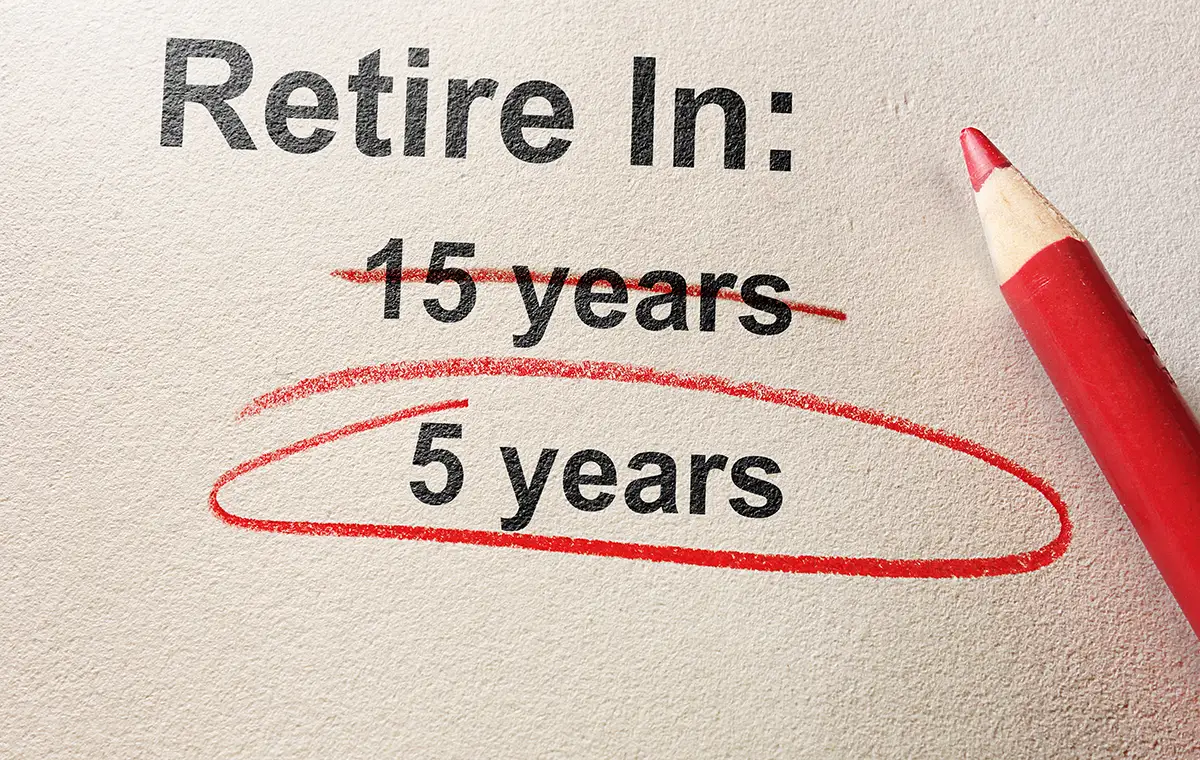What is the advantage of investing for retirement early? (+ examples)
What is the advantage of investing for retirement early? (+ examples) It’s an exciting time of your life when you’re between 25 and 35 years old:...

As the title implies, you’re here because you want to develop a deeper understanding of what the true risks of investing are, and this may be for a number of reasons:
You’ve invested in the past, and you lost your shirt. (Many of us have been there, you’re certainly not alone.) Before you get back in the saddle, it makes sense you would want to understand why you suffered those losses, so you can avoid those risks in future, to the best of your abilities.

The thing with investing is that risk is part of its DNA.
🔎 Related: How much does investment management cost?
I wish I had better news on that front, but that’s the plain ol’ truth — there is simply no way to completely sidestep risk as an investor. That means an essential part of your job as an investor (at any level) is managing your own risk. To do that, you need to know what your risks are (which we will cover in detail below), as well as what risk you can tolerate emotionally and financially.
Now, the academic definition of investment risk is the probability of investment loss. Here at Sound Financial, our definition is slightly different, but in a critical way:
Investment risk is the probability of you not reaching your financial goals. (I wish I could take credit, but you can thank Joel for this zinger.)
We prefer to use this definition because it reshapes how you view and manage the investments themselves. Why? Because there is a tangible and emotional difference between the idea of a vague percentage of investment loss and falling short of something specific — and personal — you know you want to achieve.
🔎 Related: Active vs. passive vs. discretionary investment strategies
It’s important that we align on this definition of investment risk first before we unpack what the actual risks are, as they can all lead to the same place: missing your financial goals in a way that causes you to miss your life goals. That is what we want to do our best to avoid, and this mindset of understanding what investment risk really means is how you start.
When you know your true risk in investing is missing your financial goals, then you can determine what types (or sizes) of investment loss can you withstand and still reach your financial goals. It is a very logical decision, just make it a math problem.
Then there’s the emotional aspect of defining your own risk tolerance. What types (or sizes) of loss can you withstand emotionally? That threshold may be lower than what you can tolerate financially, so you need to be honest with yourself. Especially since science shows we feel the pain of loss twice as much as the joy of gain.
🔎 Related: Should I be scared to look at my investment accounts?
How do you know where your own emotional risk tolerance lies with investing? Look, part of me wants to be a total smart aleck here and say, “Well, you’re a grown up, come on now.” But (a) that’s not helpful, and (b) I know this is a new way of thinking for many of you, considering how pop culture has negatively impacted how we think about investing. (If only it were as easy as “buy low, sell high!”)
Or add a few zeroes if that gets your attention better ...
Now, ask yourself, would you panic if you logged into your account and saw you only have $800 … or $700 … or $600 … or $500? At what point do red alarm bells of panic start going off for you? There is no right or wrong answer here. This is about drawing your line of emotional risk tolerance in a way that makes sense for you.
Even though I’ve been passionately advising folks in this line of work for decades, I had to make this call for myself, as well. Through experience, I’ve learned about the emotional nature of risk tolerance. I know that while I have gambled in the markets plenty in the past, I know I’m not a gambler now. I was taking those types of risks in the past as a thrill-seeker, but that’s not who I am today.
🔎 Related: 7 best compound interest investments (overview + examples)
We talk a lot about this idea of understanding emotional risk tolerance with our clients, who are sometimes afraid to check their investment accounts for this very reason. Ups and downs are what you should expect in investing. But again, we’re trained by the media to expect immediate gains without considering that peaks and valleys are part of the investing equation.
Put another way, any football player worth their salt doesn’t go into a game hoping never to get hit. Blocking, tackling, and sacks — it’s all part of how football gets played. You can’t score if you’re always afraid you’re going to fall down.
For those of you who are expecting a deeply technical, jargon-filled answer to this question, you may be disappointed. The answer is actually quite simple. There are four risks to investing you need to be aware of:
When you strip away all “insider baseball” language of financial statistics used to quantify investing risk, they’re all talking about (and measuring) one of the above in some way.
Now, some of you may feel dissatisfied with such a seemingly basic summary of what investing risks are. I get it. It’s not a sexy answer you can really sink your teeth into as an investing nerd. However, if this is you, I want to encourage you to shift your thinking.
🔎 Related: Is the stock market gambling?
In the financial world, we know we’re dealing with risks. Therefore, we are attempting to predict, control, or respond to future events. Unfortunately, it doesn’t matter how hard we try to accomplish this, none of us can predict the future. Yes, forecasting models are pretty doggone good, and trend following models are pretty doggone good — over long periods of time, of course.
But it’s complicated. As a result, it can feel like we’re drowning in an endless waterfall of facts and data and conflicting viewpoints against the backdrop of a volatile market. If you obsess about profits and gains, it can become like a drug — one of the most powerful in the world. That’s why contextualizing all that you read and hear about investment risk in one of those four risk categories will stand you in good stead.
When you view risk as a potential loss of money, time, opportunity, or your ability to hit your financial goals in a way that jeopardizes your life goals, you will look at your investment decisions differently. The numbers, the jargon, the statistics cannot tell you what you specifically can tolerate financially or emotionally, based on your goals.
Although we are certainly here as an investing sounding board if you ever need one, ultimately a conversation about understanding what your risks with investing are is one that should end with you determining what your risk tolerance is.
🔎 Related: Real assets vs. financial assets (comparison + examples)
Yes, you can withstand a certain amount of loss and still reach your financial goals. This is an amount you will need to define. However, again, you need to determine what amount of risk you can withstand from an emotional standpoint. No investing gains are worth you constantly being stressed over the state of your accounts.
You must take risks to grow your investments, certainly. Knowing your own numbers will help you shape your portfolio in the way that makes the most sense for you.

What is the advantage of investing for retirement early? (+ examples) It’s an exciting time of your life when you’re between 25 and 35 years old:...

If you’re reading this right now, and you’re in your 30s, I am willing to wager that you get in the abstract sense why planning early for retirement...

College and university endowments are absolute marvels. Yes, you play an essential role in the long-term health and sustainability of your...

I’ll be honest, I get excited when folks like you come to me with questions like this. You’re at a point in your life where you are thoughtfully...